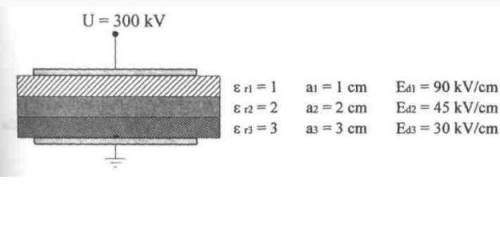
Engineering, 19.03.2021 15:10, boogydavis219
Q3. Consider the three-layer parallel plate electrode system shown in the figure. Thickness,
relative dielectric constants and breakdown field stress of each layer are given.
a) Calculate the voltage and electric field strength of each layers.
b) Show whether the system can be breakdown or not by the applied voltage.
c) Calculate the maximum voltage that can be applied to the system without discharge in
any layer of the system.
(Where d1=a1, d2=a2, d3=a3 and Eb1=Ed1, Eb2=Ed2, Eb3=Ed3


Answers: 3
Other questions on the subject: Engineering

Engineering, 03.07.2019 14:10, bryneosburn
Line joining liquid phase with liquid and solid phase mixture is known as: a) liquidus b) solidus c) tie line d) none of the mentioned
Answers: 2


Engineering, 04.07.2019 18:10, heidiburgos1own6c0
Fluids at rest possess no flow energy. a)- true b)- false
Answers: 3

Engineering, 04.07.2019 18:10, DestyHilBan1183
Adouble-strand no. 60 roller chain is used to transmit power between a 13-tooth driving sprocket rotating at 300 rev/min and a 52-tooth driven sprocket. a) what is the allowable horsepower of this drive? b) estimate the center-to-center distance if the chain length is 82 pitches. c) estimate the torque and bending force on the driving shaft by the chain if the actual horsepower transmitted is 30 percent less than the corrected (allowable) power.
Answers: 3
Do you know the correct answer?
Q3. Consider the three-layer parallel plate electrode system shown in the figure. Thickness,
relati...
Questions in other subjects:




Mathematics, 07.03.2020 18:57

Chemistry, 07.03.2020 18:57


Mathematics, 07.03.2020 18:57


Mathematics, 07.03.2020 18:58







